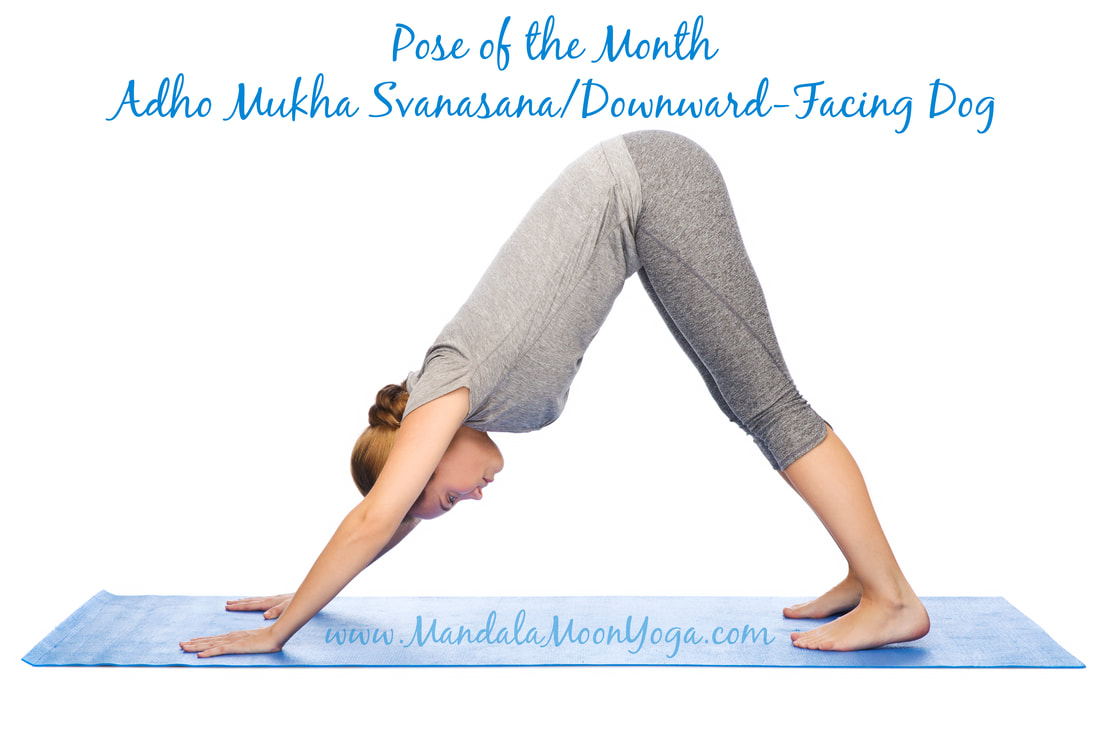Sanskrit:
Adho = Downward; Mukha = Facing; Svana = Dog; Asana = pose
(Ah-doh MOO-kah shvah-NAH-sah-nah)
Benefits/Purpose:
Downward-Facing Dog, or “Down Dog,” strengthens the upper body, elongates and gently realigns the vertebrae, stretches the back of the legs, improves circulation, and relieves tension from the neck and back.
Precautions:
As always, check with your healthcare provider before beginning any physical practice. If you have weak back muscles, hamstrings, sciatica, or knee problems, keep knees bent and spine straight. For those with carpal tunnel syndrome, press into the base of the fingers. For those with recent or chronic injuries or inflammation in ankle, knee, leg, hip, back, shoulder, arm, or wrist or those with uncontrolled high blood pressure or diseases of the eyes or ears, the pose may be contraindicated.
How to Practice:
- Begin in table position (on your hands and knees), with knees under the hips and wrists under the shoulders. Spread your fingers and curl your toes under.
- Press into your hands and engage your arms, shoulders, and pectoral muscles to stabilize your body. Keep your knees bent as you raise your hips as high as you can.
- Pull your shoulder blades down and draw them away from the spine. Engage and stabilize your shoulders as you lengthen your waist.
- Ground through your index fingers and thumbs.
- Press your heels toward the ground and straighten your legs as much as possible, comfortably, maintaining elongated spine.
- Keep the neck in in line with the spine.
- To release, bend your knees and lower back into table position.
Modifications/Variations:
- Practice with your hands on a wall or the back of a chair.
- Bend the knees to ease the pressure on the hamstrings and low back.
- Use a wedge or the wall to support the heels.



 RSS Feed
RSS Feed